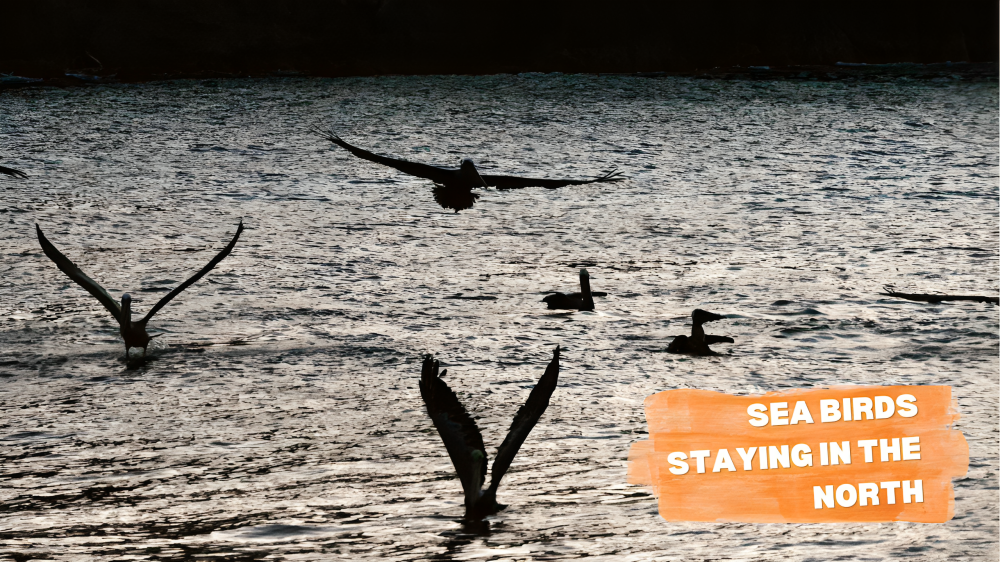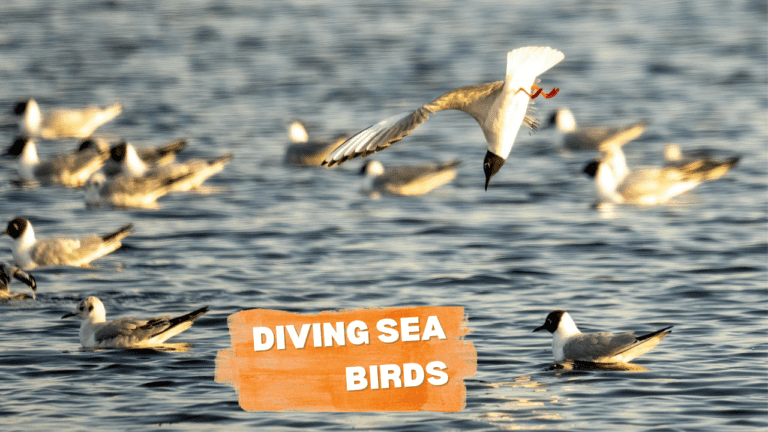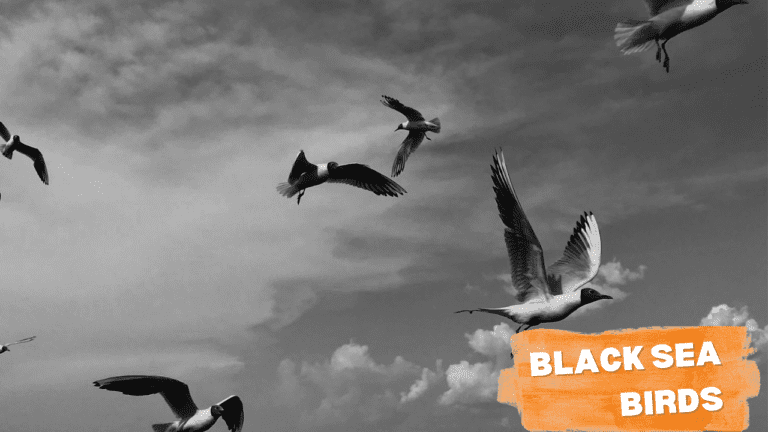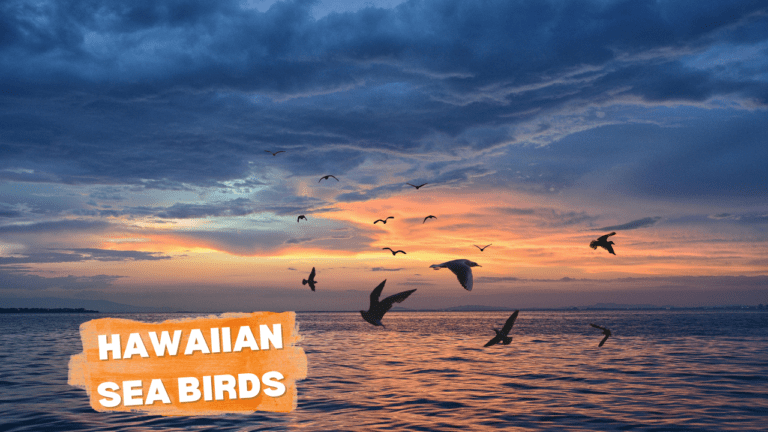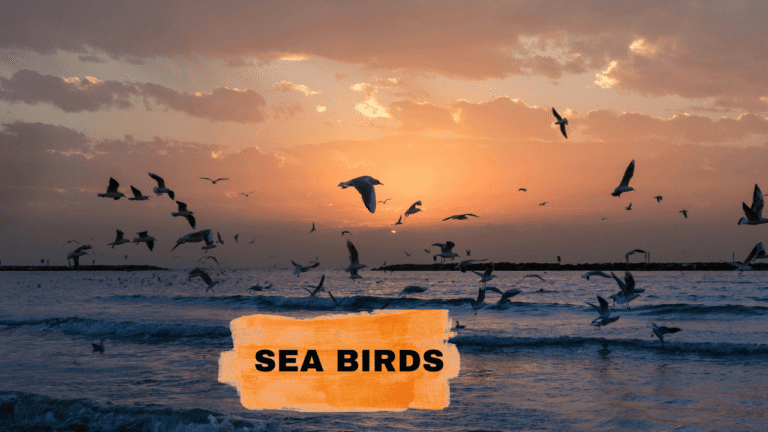Sea Birds staying in the North
Have you ever wondered what it’s like in the chilly, majestic landscapes of the northern seas? It’s not just icebergs and polar bears—oh no, it’s also home to some of the most fascinating and resilient birds you can imagine. Today, I’m going to take you on an adventure to meet ten incredible sea birds that call the northern regions their home. Ready to soar into their world? Let’s flap into it!
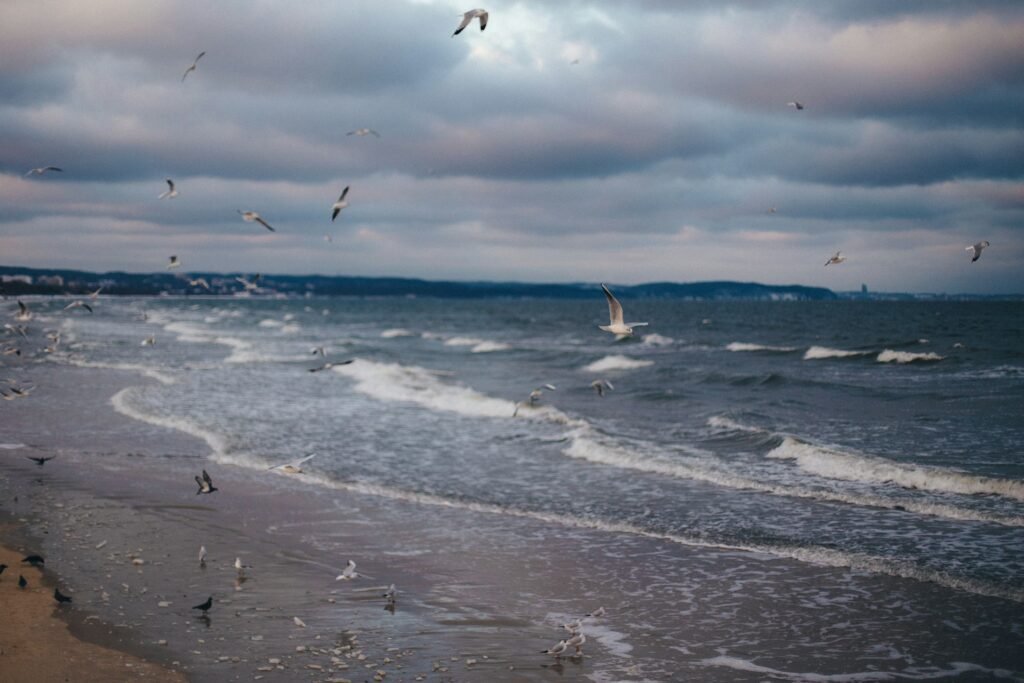
What Makes Northern Sea Birds Special?
Before we meet our feathery friends, let’s chat about what makes these northern sea birds so special. Unlike their southern counterparts, these birds are well-adapted to the harsh conditions of the north. They have unique features like thicker feathers and a higher fat content to keep them warm. Their nesting strategies and migration patterns are perfectly tuned to take advantage of the northern summer’s endless daylight and abundant food. Their ability to navigate and survive in such extreme conditions is nothing short of remarkable, making them fascinating subjects of study and admiration.
1. Snowy Owl: The Ghostly Hunter of the Arctic
The Snowy Owl is a stunning emblem of the Arctic wilderness, known for its striking white plumage that blends seamlessly into its snowy environment. These owls are among the largest in North America and are distinguished by their round heads, yellow eyes, and lack of ear tufts. Adapted to life in the Arctic, they thrive in the frigid climate by hunting during the long daylight hours of the northern summer. Snowy Owls are not just remarkable for their beauty and hunting prowess; they are also unique among owls for being diurnal, actively hunting both day and night depending on the season.
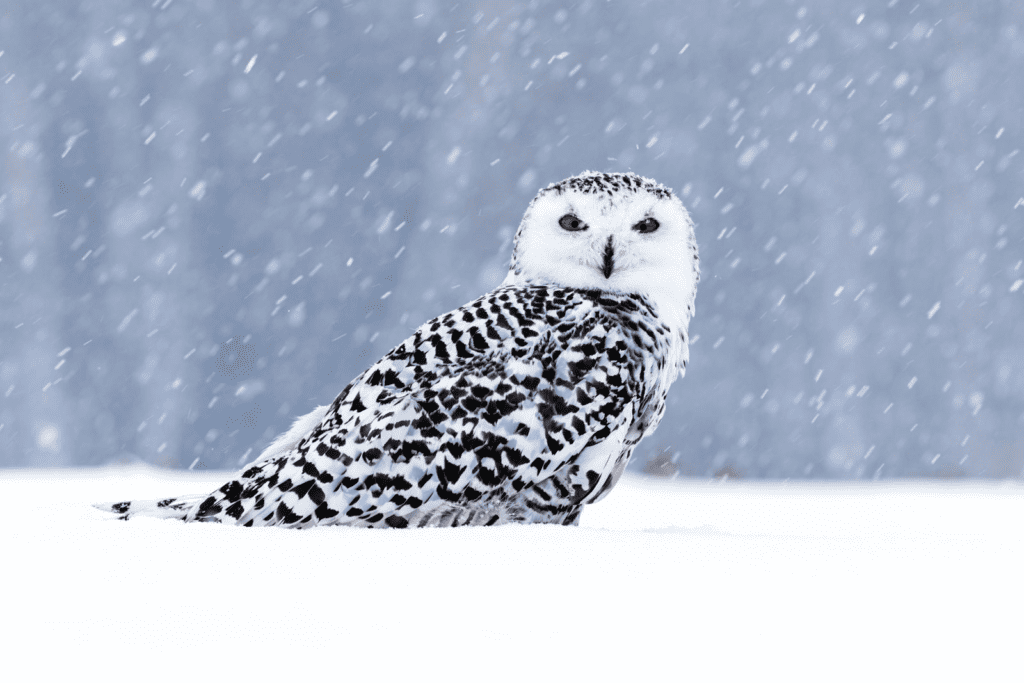
- Habitat: Snowy Owls are primarily found in the open, treeless tundra of the Arctic regions of North America and Eurasia. They prefer flat, expansive areas where they can spot prey from afar.
- Feeding: These owls mainly feed on rodents, especially lemmings. Their diet also includes a variety of other small mammals and birds. They are skilled hunters, utilizing their keen eyesight and hearing to detect prey even under thick snow.
- Key Info: Snowy Owls are uniquely adapted to their harsh environment with their thick plumage, heavily feathered feet, and ability to regulate their body temperature to cope with Arctic temperatures. Notably, they are one of the few owl species that are active during the day, adapting their hunting patterns to the continuous daylight of the Arctic summer.
2. Arctic Tern: The Long-Distance Champion
Next is the record-breaking Arctic Tern. Known for having the longest migration of any bird, they travel from their Arctic breeding grounds to the Antarctic and back each year. That’s like flying from the North Pole to the South Pole! Can you imagine taking such a long trip every year? This extraordinary journey ensures they see two summers every year and more daylight than any other creature on the planet. Their endurance and determination are a marvel in the avian kingdom, making them a symbol of ultimate persistence.
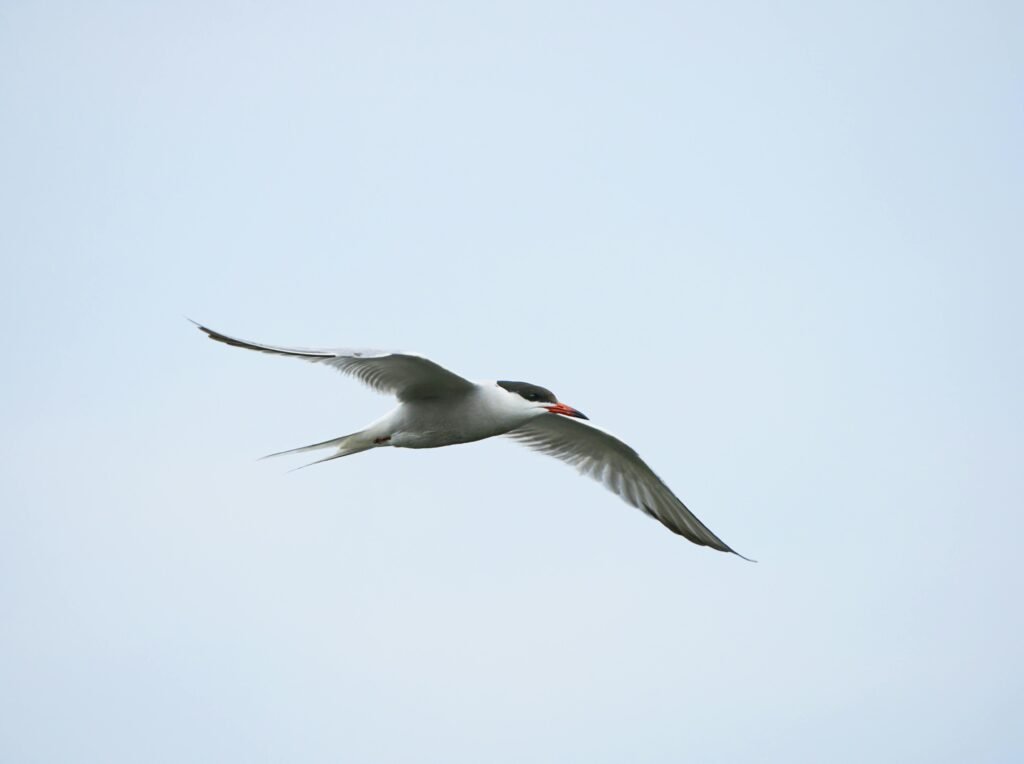
- Feeding: The diet of Arctic Terns mainly consists of fish and small marine invertebrates. They catch their prey by performing elegant dives into the water.
- Habitat: Arctic Terns breed in circumpolar regions, preferring open tundra, sandy beaches, or islands with sparse vegetation.
- Key Info: They are famous for their long migration, traveling over 25,000 miles annually from their northern breeding grounds to the Antarctic waters and back.
3. Ivory Gull: The Snowy Sentinel
Meet the Ivory Gull, with its stunning snow-white feathers that blend perfectly into the icy landscapes it calls home. These birds are true northerners, spending their lives near the polar ice caps. They are scavengers and often follow polar bears to feast on the leftovers from their hunts. Their pristine white plumage not only provides camouflage in their snowy environment but also reflects a purity and ruggedness that is synonymous with the Arctic’s natural beauty.
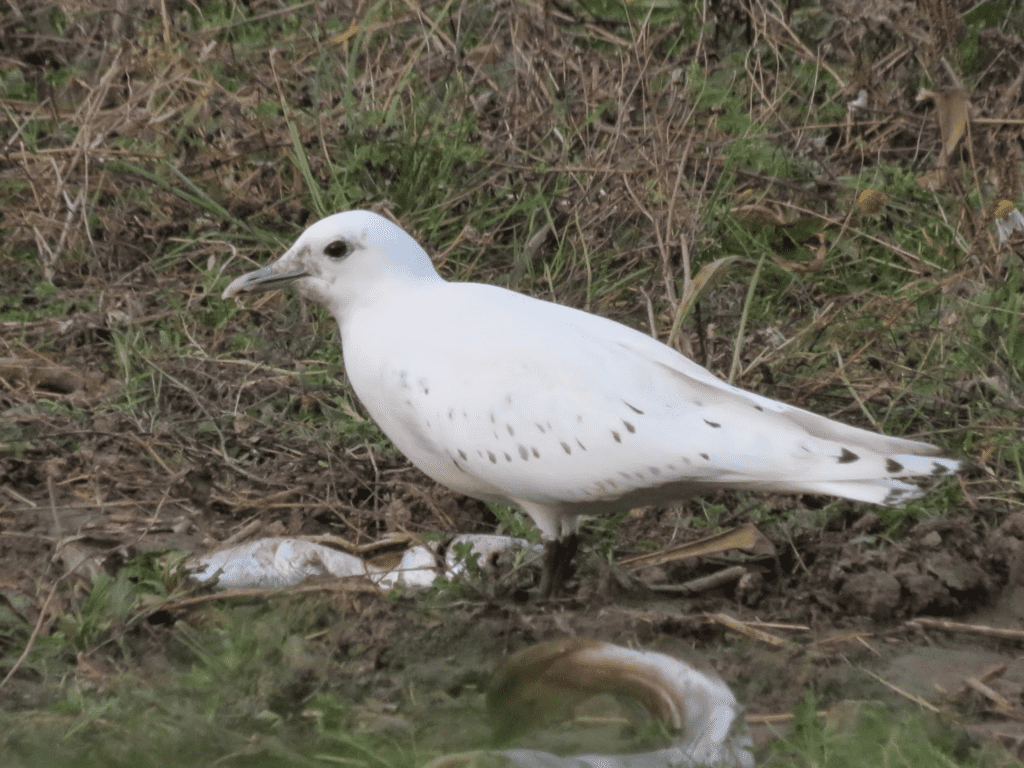
- Feeding: Ivory Gulls primarily feed on fish and marine invertebrates, but they are also known to scavenge on the carcasses left by polar bears.
- Habitat: These gulls are high Arctic species, found around the pack ice and polar regions. They rarely venture far from the ice.
- Key Info: The Ivory Gull is among the few bird species that spend their entire lives in the high Arctic.
Dive deeper into the mysteries of the sea universe and uncover the secrets of Sea Bird Related To a Gull—dive into their world to learn about them!
4. Brünnich’s Guillemot: The Cliff Hanger
Ever seen a bird that nests on sheer cliff faces? The Brünnich’s Guillemot does just that. These birds lay their eggs on the narrowest of ledges, which helps protect them from predators. They’re excellent divers and can plunge deep into the sea to catch their prey. Their life on the precipice is a breathtaking spectacle of balance and bravery, showcasing nature’s ability to adapt and thrive in even the most precarious of habitats.
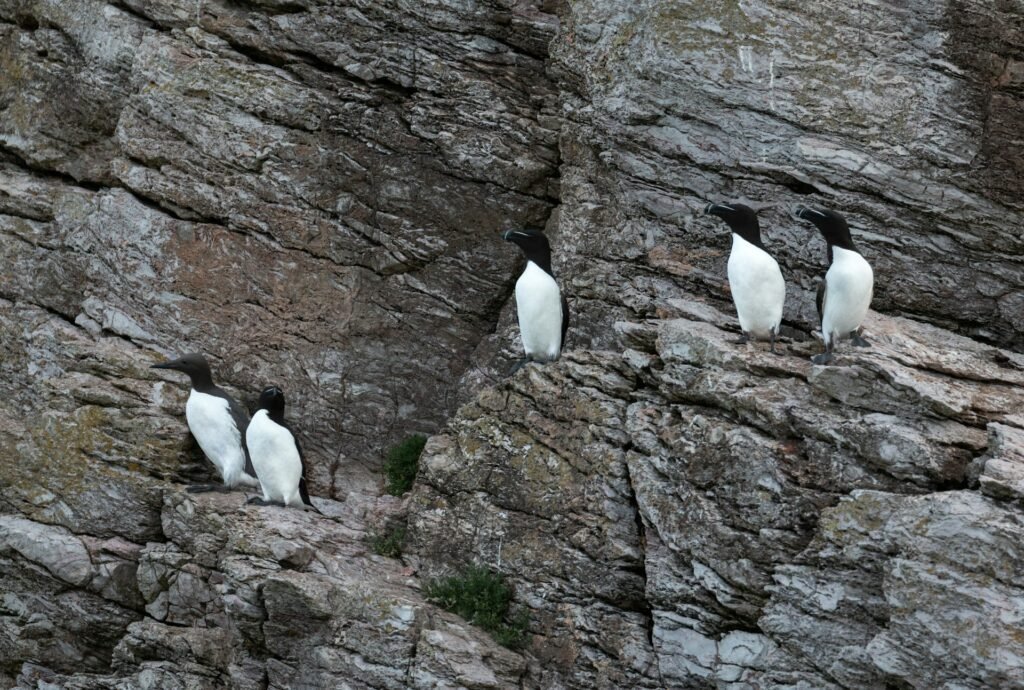
- Feeding: These birds dive from the surface and use their wings to swim underwater to catch fish and crustaceans.
- Habitat: Brünnich’s Guillemots breed on cliffs of Arctic and sub-Arctic regions. They are very colonial during the breeding season.
- Key Info: Their eggs are uniquely pear-shaped to prevent them from rolling off the narrow cliff ledges.
5. Northern Fulmar: The Glider
The Northern Fulmar might not win any beauty contests, but its flying skills are top-notch. With a stiff-winged style, they glide over the waves, rarely needing to flap. They have a special gland that helps them drink seawater by excreting the salt through their nostrils! These birds are also known for their loyalty to their nesting sites, returning to the same spot year after year. Their mastery of the coastal winds makes them extraordinary pilots of the bird world, gliding effortlessly for hours on end.
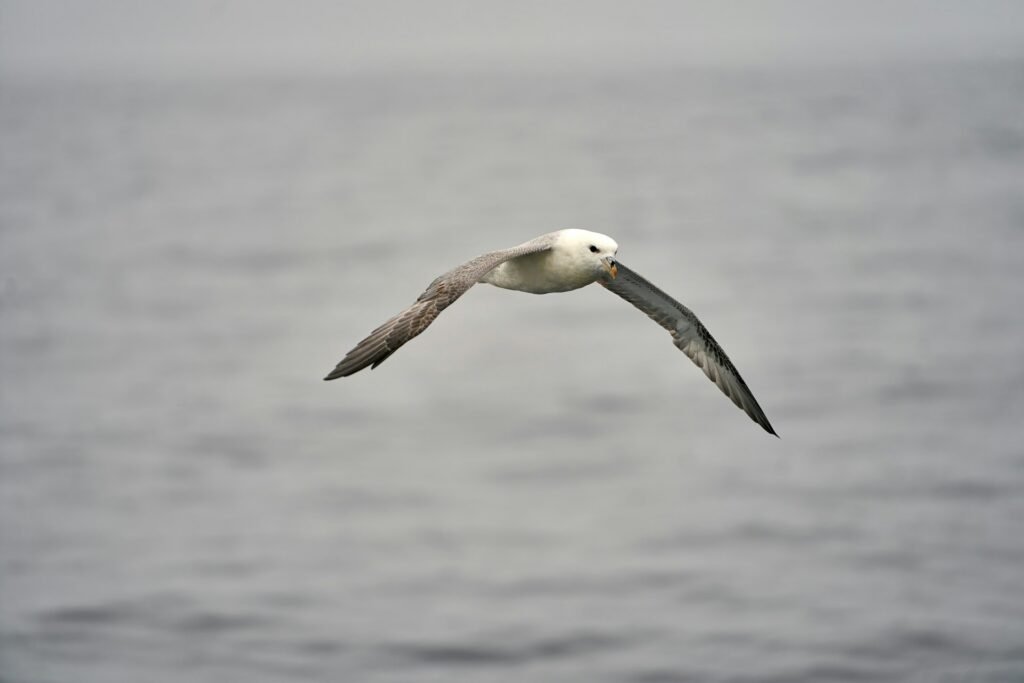
- Feeding: Northern Fulmars feed on fish, squid, and plankton, which they often pick from the surface of the water while flying.
- Habitat: They nest on cliff ledges and rocky crevices in colonies that can number in the thousands, across the northern Atlantic and Pacific Oceans.
- Key Info: Fulmars have a tube-like structure on top of their beak to excrete salt, as they ingest a lot of seawater during feeding.
6. Common Eider: The Downy Diver
Known for its luxurious down, the Common Eider is a large sea duck that dives to the ocean floor to snatch up mussels and crabs. The females line their nests with this down, which is harvested (carefully and sustainably) for use in human bedding and clothing. These ducks are not just about cozy feathers; they’re also community-oriented. During the breeding season, females often nest in groups, and they collectively look out for predators while raising their ducklings. Their social structure and communal living are fascinating aspects of their behavior, showcasing the power of community in the wild.
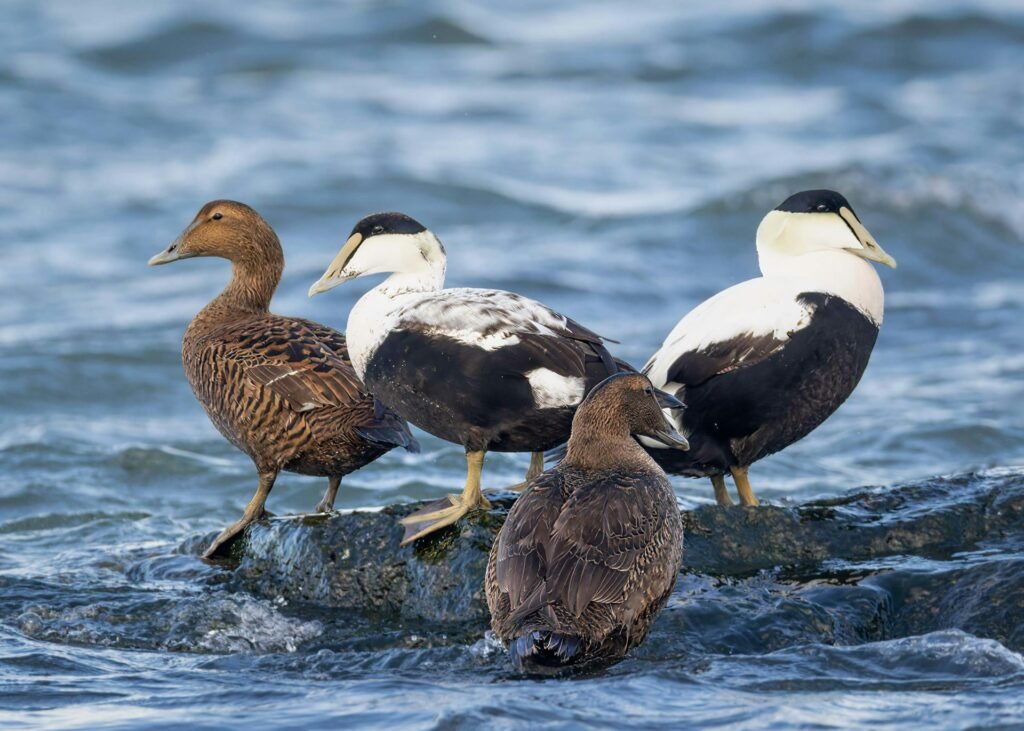
- Feeding: Common Eiders dive to the seabed to forage for mollusks, crustaceans, and sea urchins.
- Habitat: They are found in coastal northern regions, breeding in dense colonies on islands free from terrestrial predators.
- Key Info: The eiderdown, plucked from the breast of female eiders to line their nests, is highly prized for its insulating properties.
7. Black-legged Kittiwake: The Crier of the Cliffs
This gull is named for its distinctive call, sounding like “kittiwake.” The Black-legged Kittiwake nests in large colonies on cliff faces and is a true sight to behold when hundreds take flight at once, filling the air with their calls. Unlike other gulls, kittiwakes are exclusively marine, rarely venturing far from saltwater, and are adept at navigating the harsh conditions of the northern seas. Their life on the rugged cliffs is a dramatic saga of survival and beauty, echoing the timeless dance between sea, sky, and life.
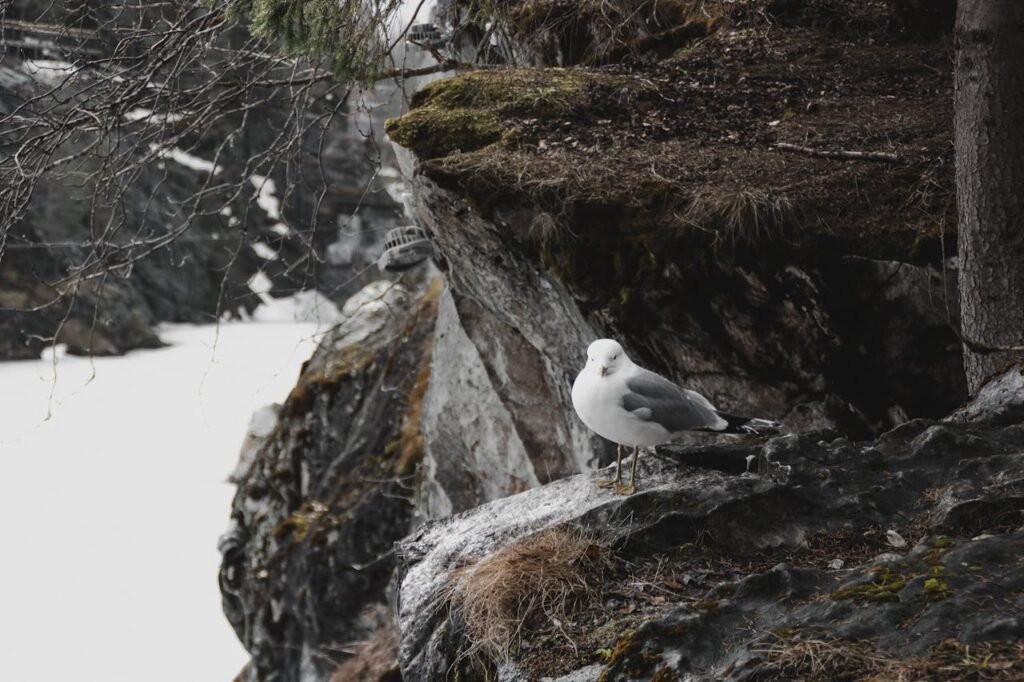
- Feeding: These birds primarily feed on fish, which they catch by plunging from the air into the sea.
- Habitat: Kittiwakes are true seabirds, spending much of their life on the open water, except when they return to cliff faces to breed.
- Key Info: Unlike many other gull species, kittiwakes are exclusively marine and rarely seen inland.
8. Atlantic Puffin: The Fisherman
While similar to its cousin, the Atlantic Puffin is noted for its remarkable fishing technique. It dives beneath the water, using its wings to swim and chase fish. A single puffin can carry dozens of small fish crosswise in its beak! These puffins are not just skilled hunters but also brilliant engineers of their burrows, creating complex tunnel systems where they safely raise their chicks. The ingenuity and adaptability of the Atlantic Puffin make it a master of both sky and sea.
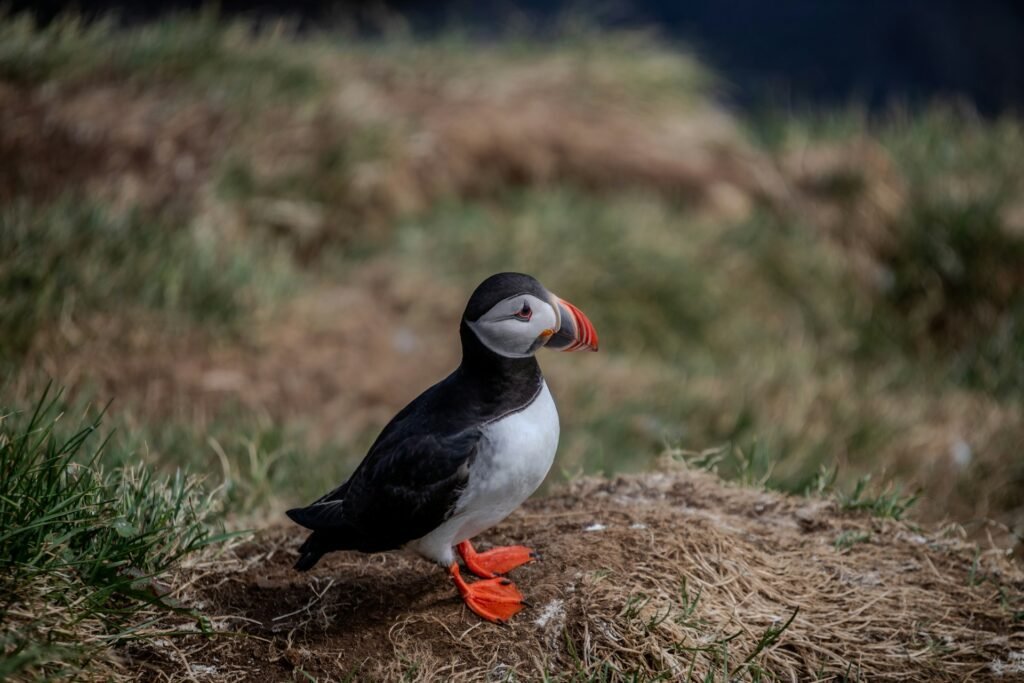
- Feeding: Similar to their puffin relatives, Atlantic Puffins are adept at catching multiple fish in one dive and can hold several in their beak at once.
- Habitat: They breed in burrows on offshore islands, with a strong preference for islands that predators cannot easily access.
- Key Info: Atlantic Puffins have a remarkable ability to flap their wings up to 400 times per minute, making them powerful swimmers.
9. Great Skua: The Pirate Bird
The Great Skua is known for its aggressive behavior, especially when it comes to meals. This bird often chases others like gulls, forcing them to drop their food. Skuas are also brave defenders of their nests, not hesitating to dive-bomb intruders. They embody the fierce spirit of survival in the northern seas, taking on even large birds and animals. Their robust nature and fearless tactics in both defense and hunting highlight the raw, untamed character of the marine wilderness.

- Feeding: Great Skuas are known for their aggressive behavior, including predation and kleptoparasitism, where they force other birds to relinquish their catch.
- Habitat: They breed on remote islands in the North Atlantic, preferring open moorland.
- Key Info: Skuas are among the few bird species known to attack humans who venture too close to their nests.
10. Red-throated Loon: The Arctic Diver
Last but certainly not least is the Red-throated Lion. Famous for its haunting calls that echo across northern lakes, this loon is an excellent diver, often disappearing into the water to emerge far from where it dove. The Red-throated Loon is a symbol of the northern wilderness, its eerie calls are a soundtrack to the vast, untouched landscapes it inhabits. These loons are not just remarkable for their vocal abilities but also their dramatic mating dances and fierce loyalty to their nesting sites.

- Feeding: These loons dive from the surface to catch fish, propelled by their powerful webbed feet.
- Habitat: Red-throated Loons breed on secluded freshwater lakes in the Arctic tundra and migrate to coastal waters in winter.
- Key Info: Their distinctive red throat patch, which is most vivid during the breeding season, helps identify individuals.
Conclusion
As we wrap up our journey among the sea birds of the north, it’s clear that these birds are not just survivors but also thrivers in their harsh environments. Each bird plays a crucial role in the maritime ecosystem, from controlling fish populations to enriching the cultural tapestry of the regions they inhabit. Their presence is a testament to the resilience of nature and the interconnectedness of our global ecosystem. Protecting these birds ensures that the northern seas remain vibrant and full of life. So, next time you find yourself gazing out at the sea, take a moment to appreciate these incredible avian adventurers. Who’s your favorite among these winged wonders? Share your thoughts and let’s keep the conversation flying high!
You Might Also Like
Top 10 Must-See San Diego Sea Birds
